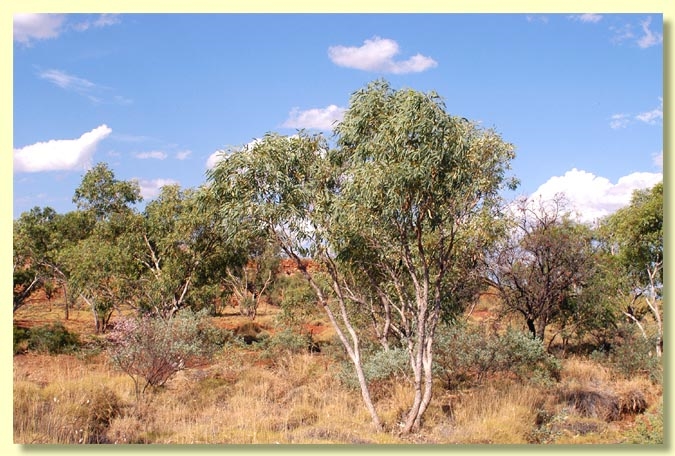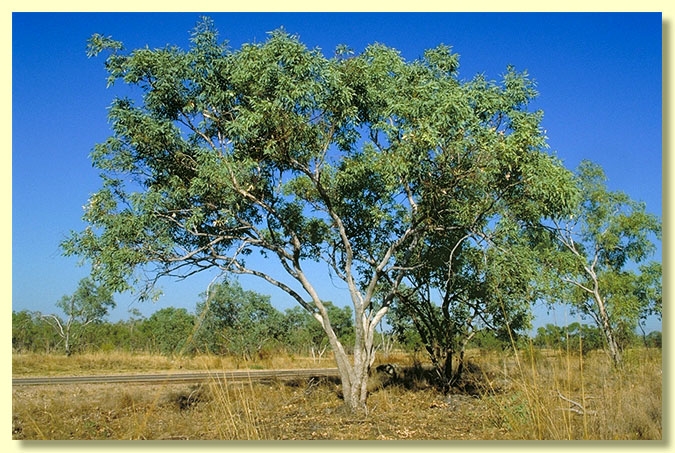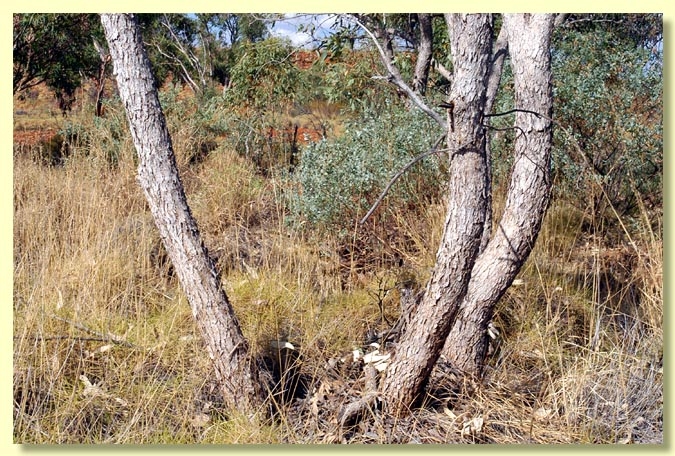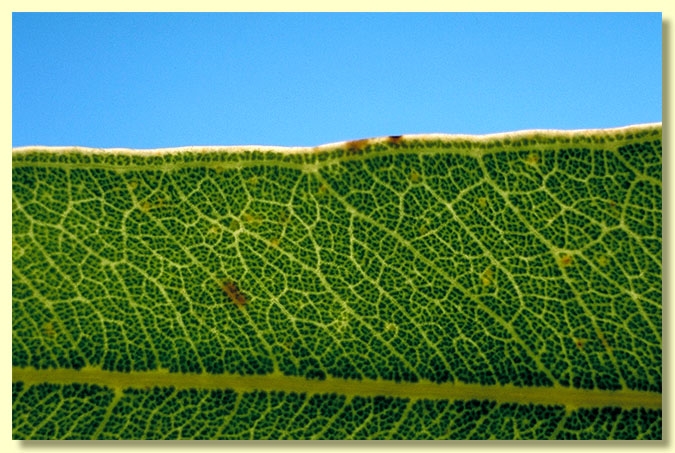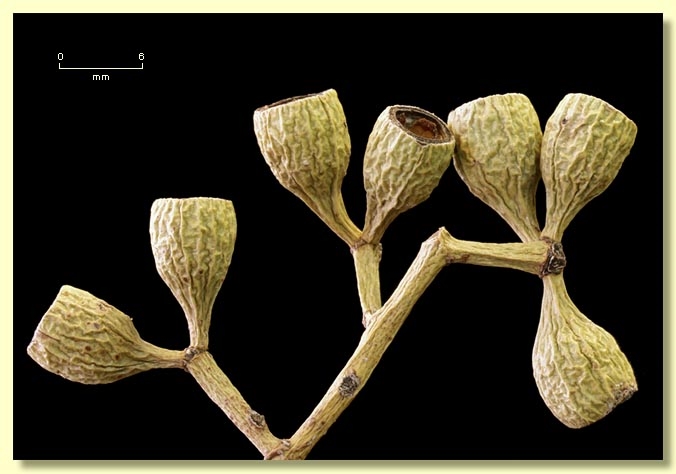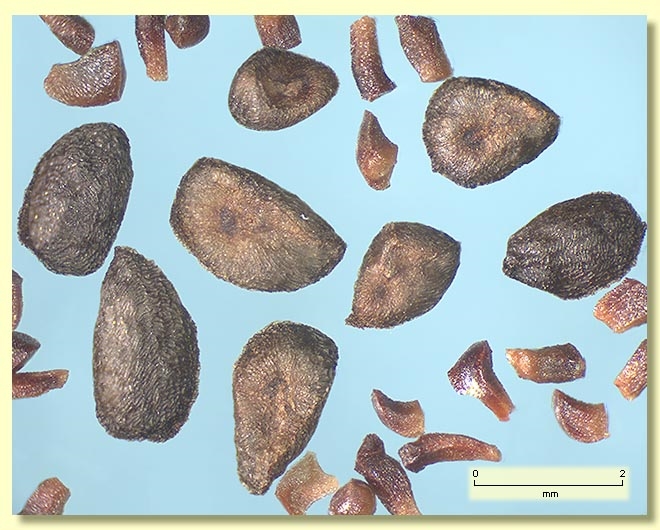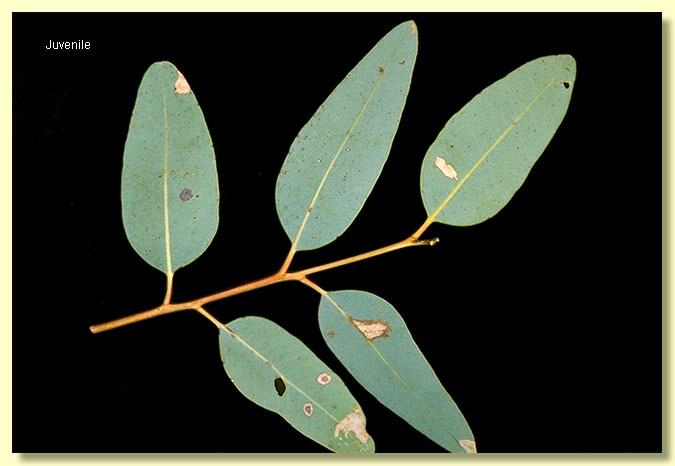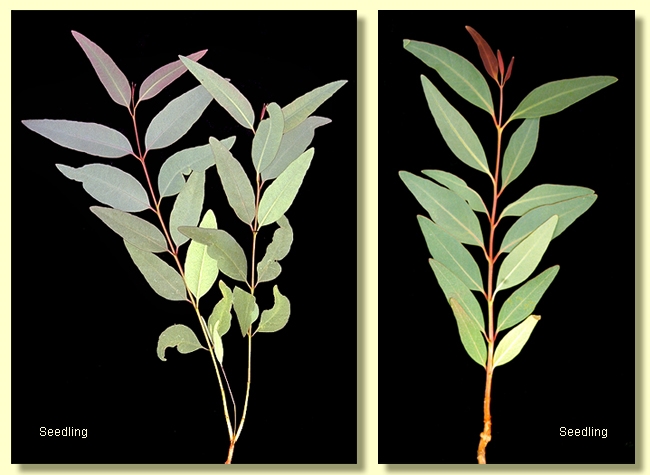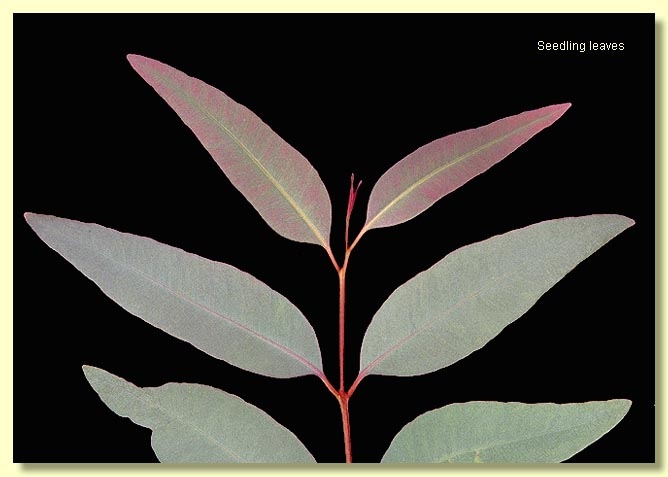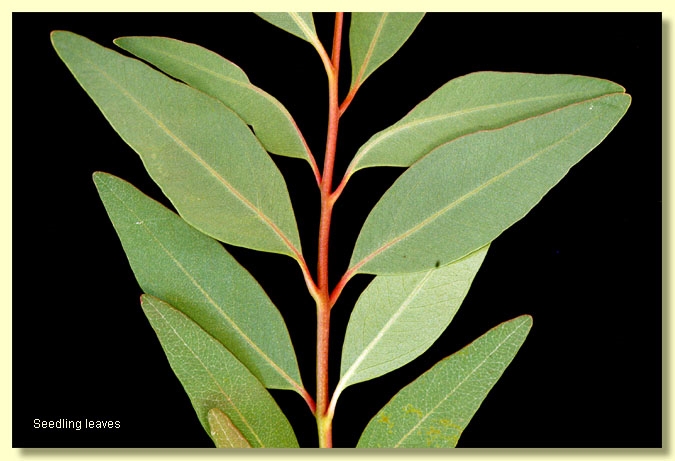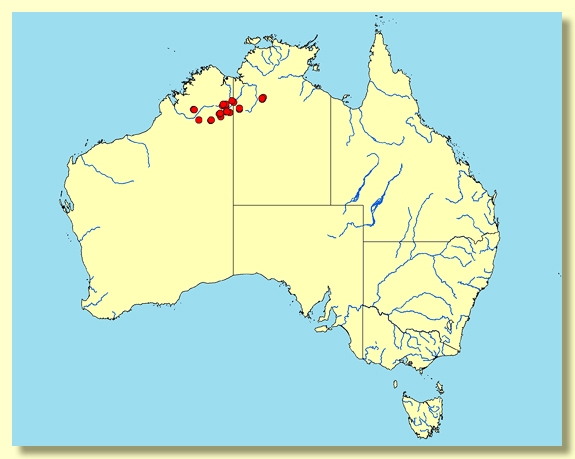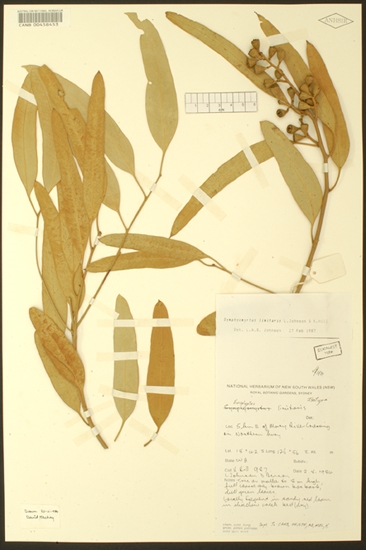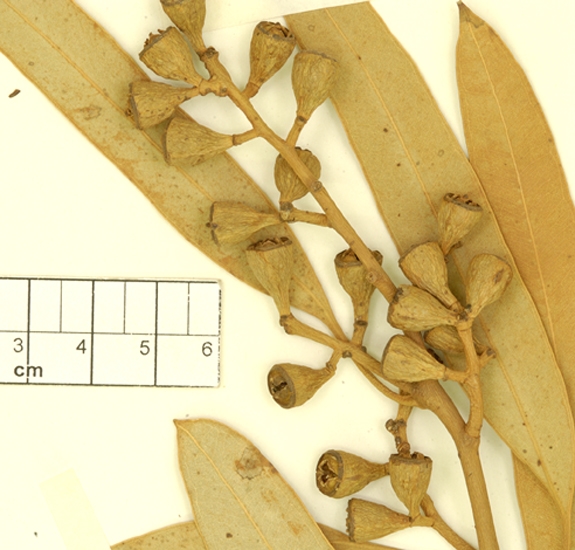Eucalyptus | Symphyomyrtus | Adnataria | Apicales | Aquilonares | Fortes
Euclid - Online edition
Eucalyptus limitaris
Tree or mallee to 8 m tall. Forming a lignotuber.
Bark rough tight wavy box-type to the smallest branches, dark grey to grey-brown to whitish brown.
Branchlets lack oil glands in the pith; non-glaucous.
Juvenile growth (coppice or field seedlings to 50 cm): not seen (by inference from the seedlings: stems square in cross-section, smooth, non-glaucous; leaves always petiolate, alternate, ovate to lanceolate, base rounded to tapering, green.)
Adult leaves alternate, petioles 0.8–2.5 cm long; blade lanceolate to falcate, 7–25 cm long, 1–3.5 cm wide, base tapering to petiole, margin entire, apex pointed, concolorous, dull, light green to green, side-veins acute to greater than 45° to midrib, reticulation dense to very dense, intramarginal vein present, oil glands apparently absent.
Inflorescence terminal compound and sometimes compound in upper leaf axils, peduncles slender, 0.3–2.3 cm long, buds 3 or 7 per umbel, pedicels 0.2–0.9 cm long). Mature buds obovoid to pyriform, 0.7–0.8 cm long, 0.4 cm wide, scar present (outer operculum shed early), operculum conical, stamens irregularly flexed or mostly inflexed with very few irregularly disposed, all fertile, anthers ± adnate, basifixed, cuboid to globoid, dehiscing by lateral slits, style long and straight, stigma blunt, locules 4, the placentae each with 4 vertical ovule rows. Flowers not seen.
Fruit pedicellate (pedicels 0.1–1.4 cm long), obconical tending to cylindrical to ± barrel-shaped or cupular, 0.5–1.1 cm long, 0.5–0.9 cm wide, usually longer than wide, disc descending usually only a short way to the ovary roof, or sometimes level, valves 4, at rim level.
Seeds dark brown to black, 1.3–3 mm long, flattened-ovoid, dorsal surface shallowly reticulate, hilum ventral.
Cultivated seedlings (measured at ca node 10): cotyledons large, reniform; stems square in cross-section; leaves always petiolate (petioles 0.5–1 cm), opposite for 5–10 nodes then becoming alternate, lanceolate, 4.5–11.2 cm long,1.4–2.8 cm wide, base tapering, apex pointed, dull, concolorous, green to grey-green (non-glaucous).
Flowering has been recorded in December.
A mallee or spreading tree occurring from the seasonally dry upper reaches of the Fitzroy River system in the southern Kimberley region of Western Australia, east to the upper Victoria River area in the Northern Territory. It is fully rough-barked, has a light green crown and obconical fruits that are longer than wide.
Eucalyptus limitaris was described subsequent to the classification of the eucalypts published by Brooker (2000). Within that classification E. limitaris would be best placed in Eucalyptus subgenus Symphyomyrtus section Adnataria (the boxes) because the buds have two opercula, ovules are in four rows, seeds are flattened-ovoid, cotyledons are reniform, and anthers are rigid on the staminal filaments. Within section Adnataria, E. limitaris belongs to a subgroup of box species with tropical distribution, series Aquilonares subseries Fortes, having inflorescences terminal on the branchlets, adult leaves very densely reticulate and fruit that are not fragile and have valves more or less at rim level when dehisced. The species making up subseries Fortes are E. leptophleba, E. leucophylla, E. koolpinensis, E. patellaris, E. oligantha and E. pruinosa. Three more tropical box species, E. limitaris, E. tephrodes and E. xerothermica, published since 2000 also belong in subseries Fortes
Eucalyptus limitaris is similar to the Pilbara box, E. xerothermica, differing in having fruit consistently longer than wide and also thinner-textured crown leaves. E. xerothermica has stouter fruit that tend to be iso-diametric and has more sclerophyllous leaves, perhaps reflecting the harsher climate it endures. Within its natural range in the southern Kimberley region the dull green-leaved E. limitaris is weakly distinguished from E. tephrodes, which has bluish to glaucous leaves. E. argillacea is distinguished from E. limitaris by the glaucous branchlets, leaves, buds and fruit. Previously all three Kimberley species were included under the name E. argillacea. A Queensland species endemic to the Mount Isa – Cloncurry area, E. leucophylla, is fairly similar to E. limitaris, differing in having fruit more or less obconical and as long as wide. All the species mentioned in this paragraph are closely related and their relationship with each other and with the Top End endemic box species E. patellaris needs further investigation.
Eucalyptus limitaris: Latin limitaris, a border or boundary, referring to its distribution across the Western Australia/Northern Territory border.

